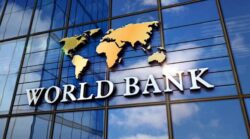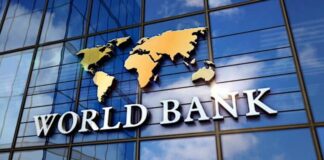Finance Minister Ken Ofori-Atta, as per Section 28 of the Public Financial Management Act, 2016 (Act 921), presented the 2020 mid-year budget review and supplementary estimates for the financial year in Parliament on Thursday, July 23. The budget review presentation by Mr. Ofori-Atta touched on key economic indicators such as growth rate, primary balance, budget deficit, revenue and expenditure targets among others.
Main essentials of the budget focused on key areas with the expressed object-target toward growth and development of the economy. Some of the areas included: a robust financial sector, education, Agriculture, job creation, infrastructural development, and Health among other relatable COVID -19 support goodies.
It is patently evident from the mid-year budget review presentation that under the dispensation of this government led by Nana Addo Dankwa Akufo-Addo, the financial sector – including Micro Economic indicators – has improved significantly and positively over the period.
Most significant is the financial sector clean-up; it has brought some sanity and whipped-up confidence of the general public, as regulatory agencies are working effectively to ensure banks and other financial institutions are in good-standing and operating within the remits of regulatory requirements in order to serve the general public without any liquidity challenges.
Paradoxically, some may argue that people lost their jobs as a result of the financial sector clean-up exercise; but on the other hand, it has also given the working class within this sector an opportunity to test other waters and venture into other business opportunities through entrepreneurial exploits. The clean-up was necessary to safeguard the ordinary Ghanaian and also ensure that the sector is able to meet all regulatory requirements and market standards.
We have witnessed regular reductions in the Monetary Policy Rate, and this goes a long way to reduce the cost of credit. Policy rate was reduced by 150 basis point to 14.5% in March. The Monetary Policy Committee, in their meeting which ended on the 24th of July 2020, was expected to either maintain the rate at 14.5% or reduce it marginally – considering the current economic climate of the country and the world at large.
Inflation under this current government has seen rates decline from 17.45% in 2016 to 7.18% as at end of 2019. The end of 2019 inflation rate also outperformed other African countries such as Nigeria (11.40%), Zambia (9.15%) and Angola (17.15%). Inflation rates saw a surge this year to end June at 11.2% from 11.30% in May. This surge was as a result of the Coronavirus (COVID-19) pandemic.
The pandemic disrupted economic activities, created uncertainties, and weakened global growth conditions. Data for the first quarter of 2020 showed a sharp contraction in economies most affected by the COVID-19 pandemic, partly reflecting the effect of public health countermeasures implemented to slow spread of the virus.
The global economy is therefore projected to contract by 3.0 percent in 2020 – under the baseline assumption that the pandemic slows in the second half of 2020, and containment measures gradually ease across most countries (IMF, April 2020 WEO).
Before and during the lockdown periods (March and April), cost of food prices on the market went up significantly. This was the result of higher demand for food products in general. However, this cannot be said of the previous government when the inflation rate was mostly on the high. The inflation rate moved from 7.13% in 2012 to 17.45% in 2016.
Below is the data for inflation rates from 2012 to 2020.
| Ghana Inflation Rate – Historical Data | ||
| Year | Inflation Rate (%) | Annual Change |
| 2020 JUNE | 11.2% | -1.0 % from MAY |
| 2019 | 7.18% | -0.63% |
| 2018 | 7.81% | -4.56% |
| 2017 | 12.37% | -5.08% |
| 2016 | 17.45% | 0.30% |
| 2015 | 17.15% | 1.66% |
| 2014 | 15.49% | 3.82% |
| 2013 | 11.67% | 4.54% |
| 2012 | 7.13% | -1.60% |
The president promised Ghanaians Free SHS in his bid to become President of the Republic, and this has been fully implemented and executed. A total of GH¢3.2billion has been invested, and as a result about 1.2 million teenagers have benefitted from this initiative. The scheme has also witnessed 266 classroom block dormitories, and toilet facilities have also been completed. This out-numbers the classroom blocks completed during the previous government’s tenure. Financial burdens of parents and guardians of these 1,199,750 teenagers have been lifted, and also room has been given for the underprivileged teenager to be in school.
The Agricultural sector at some time in the past was the backbone of Ghana’s economy in contributing to the GDP growth rate. This died off until the current leadership saw the essence of how this sector is of high importance to growth of the economy.
Government has since invested over GH¢1.85billion into this sector from a low of GH¢181million. Modernisation of the agricultural sector by current leaders of the economy has seen 1.5 million farmers enrolling for the initiative launched by the President of the Republic of Ghana under the ‘Planting for Food and Crops’ initiative, and created jobs for 2.2 million Ghanaians. Also, 7,141 hectares of land have been developed for various irrigation systems.
Still on the Agricultural sector, a total of 17 warehouses with 1,000mt capacity have also been built, with 13 more under construction. Farmers have also been supplied with 6,270 units of agricultural machinery and equipments. The implementation of Green House villages has seen 296 graduates trained in greenhouse vegetable production as at the end of 2019, and 61 trained so far in 2020; 119 youth have been identified and are yet to be trained.
These initiatives have helped shape and give the Agricultural Sector a face-lift, and seen a lot of graduates shift their attention from white-collar jobs to the agricultural sector; and has seen the sector contribute to GDP. Agriculture contributes 54% of Ghana’s GDP and accounts for over 40% of export earnings, while at the same time providing over 90% of the country’s food needs. (SRID, 2001).
During the address to parliament and the nation on Thursday, the Finance Minister indicated that a number of the workforce in both the formal and informal sectors have lost their jobs during this COVID-19 pandemic.
Thus, government has instituted an Unemployment Insurance Scheme to relieve citizens of their financial burdens. Other developed countries like Germany and the United States of America have had similar packages for citizens who lost their jobs. This, however, cannot be said of other African countries. Ghana led by this current administration, despite the high expenditures, included this in the budget to cushion citizens in both the formal and informal sectors.
Job creation and employment opportunities cannot be underplayed in the history of Ghana under the leadership of President Nana Addo Dankwah Akufo-Addo. The National Builders Corps (NABCO) after its establishment changed the status of over 100,000 Ghanaians, especially graduates, from unemployment to gaining full employment status. Processes are underway for people in the informal sector whose business have been affected by the pandemic to access to loans at lower interest rates through the NBSSI. Several Ghanaians have applied, and payments been processed and commenced.
Apart from the above, 190,000 young people have been trained under the National Entrepreneurship Innovation Programme with 4,350 funded; this has created 90,000 jobs directly and indirectly. People with disabilities have also been given utmost support under the watch of President Nana Akufo-Addo. A total of GH¢2million has been earmarked for 1,000 male entrepreneurs under the Presidential Empowerment for Male Entrepreneurs with disabilities.
Finally, on job creation and employment strategies, 97,876 individuals within the small-scale enterprises sub-sector have benefitted from MASLOC.
Regarding infrastructure, the introduction of One District, One Factory (1D1F) has seen 232 projects at various stages of implementation; 76 completed, 156 under construction with 154 districts benefitting. This has created jobs for a lot of Ghanaians directly and indirectly.
Aside from 1D1F, the railway sector has also seen a face-lift for sections of Accra – Tema (30km) and Achimota-Nsawam (33km), while that of Kojokrom – Takoradi has been rehabilitated. A standard gauge 56km of a 97km railway track laid for Tema has been completed. Government has also commenced the construction of a 300-metre railway bridge across the Volta River and a new standard gauge for the Western line (thus, from Takoradi to Kumasi) has also commenced.
All these infrastructural projects have been implemented in less than four years under leadership of the president.
Most countries, both developed and developing, have been exposed to the weakness of their health systems – and Ghana is no exception. However, the president in one of his addresses to the nation stated government’s decision to build 88 hospitals across the country.
Ghana’s first Infectious Disease Isolation and Treatment Centre was commissioned on Friday 24th July, 2020 by Vice President Dr. Mahamud Bawumia. A 600-bed Regional Teaching Hospital is set to be built in the Eastern Region worth US$80.5million. However, in the same vein, the previous government spent US$250million to upgrade and rehabilitate the Greater Accra Regional Hospital with a 420-bed capacity. It is clear that government is and has been prudent in its expenditure spending.
Health workers, especially frontline workers, have also been given some tax exemptions from their basic salaries as a form of incentive and motivation as they continue to put their lives at risk in saving thousands of Ghanaians from the COVID-19 virus. Free Transportation, free Personal Protection Equipment (PPE) have been provided for all regional and district hospitals, and some selected private hospitals.
Finally, the Finance Minister in his address indicated that free water and electricity has been extended for three more months; and communication tax has been reduced from 9% to 5% for all Ghanaians as part of efforts to reduce effects of the COVID-19 pandemic on the public.
This economic stimulus package is definitely going to reduce the cost of living for most citizens, and the process is simple, fair and transparent. Comparing this to other African countries such as Nigeria, Ghana has done relatively well. The Nigerian government, for example, has established a COVID-19 related relief package that is subject to approval by the central bank as part of the cumbersome processes which define one’s eligibility for consideration. In Ghana, these reliefs cover every single Ghanaian (both the rich and the poor
In conclusion, facts have proven that the government led by Nana Akufo-Addo has led and is leading the Ghanaian economy to the promised land. All key highlights in the 2020 mid-year budget presented by the Minister for Finance, Hon. Ken Ofori-Atta, clearly show that amid the COVID-19 pandemic, whereby several nations have been hard-hit, Ghana has prioritised the well-being of its citizenry, the health sector, agricultural sector and infrastructural development.










